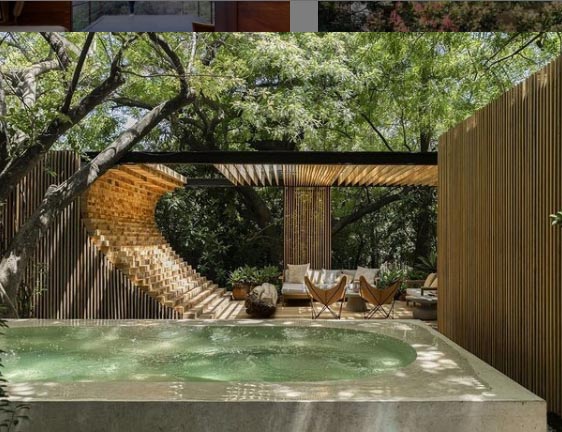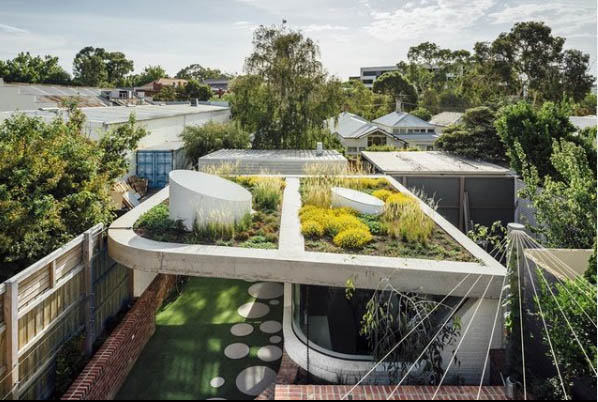May 4 2021
7 ways to make your project site more sustainable.
BY JOSEPH AZAR
This is the second article about green building practices, based on the LEED rating system.
As mentioned in the previous article: buildings are the largest users of energy in our society, meaning they present the greatest opportunity for energy conservation and environmental protection.
Let’s explore 7 ways to make our project more sustainable:

1. Construction Activity Pollution Prevention:
The first step is to prevent construction activity pollution by controlling erosion, managing sedimentation, and complying with stormwater regulations. Implementing these measures from the outset protects local ecosystems and water quality.
2. Environmental Site Assessment:
Conduct an environmental site assessment early in the project to identify any chemical residues or hazardous materials such as asbestos.
Engage local experts to gather information on the property condition. Key factors to consider include:
- Hydrology and flood hazards
- Rainwater reuse opportunities
- Existing vegetation and climate conditions
- Social exposure and the heat island effect
- Endangered species and habitat
- Soil quality and adjacent infrastructure
- Air pollution sources and proximity to vulnerable populations
- Construction materials with reuse potential
If contamination is found during the Phase II assessment, initiate remediation efforts promptly.
3. Site Development – Protect and Restore Habitat:
Preserve and restore habitat through on-site restoration or by providing financial support for off-site restoration.
For previously developed land, restore at least 30% of the site using native or adaptive plants. For greenfield sites, protect at least 40% of the greenfield area.
In high-density zones (where the floor area ratio exceeds 1.5), vegetated roofs are recommended. Ensure that vegetation is native or adaptive to promote biodiversity.
4. Create Open Space in the Project:
Design open spaces for recreation and relaxation. This area may include vegetation, water features, or other amenities that improve well-being.
- At least 30% of the total site area (including the building footprint) should be open space.
- At least 25% of the open space should be vegetated (excluding turfgrass).
Consider incorporating features like community gardens, recreational pathways, or habitat preservation zones to foster social and ecological benefits.
Minimal footprint, rainwater harvesting, gray and black water treatment, reuse for irrigation, reduction of energy consumption through lights and sensors, waste management through composting, and recycling of glass, aluminum, and cardboard are essential strategies. Use only local materials with low levels of Volatile Organic Compounds (VOC). Architects: mcxa.group
For the remaining outdoor space, consider incorporating recreational pathways and paving that promote physical and social activity. Garden spaces enhance visual diversity across different seasons, and community gardens foster social interaction and local food production. Most importantly, prioritize habitat preservation.

5. Rainwater Management:
Utilize Low Impact Development (LID) and Green Infrastructure (GI) strategies to manage rainwater effectively. Aim to control a high percentile of rainfall events (98%, 95%, or 85% for zero-lot lines).
Another approach is to manage the increase in runoff volume by comparing pre-development and post-development conditions and minimizing the difference through efficient drainage and retention systems.
6. Heat Island Reduction:
Combat heat island effects by incorporating shading strategies:
- Use open-grid paving with a high Solar Reflectance (SR).
- Reduce the parking footprint and prioritize underground or covered parking.
- Increase shaded areas through trees, canopies, or vegetative covers.
7. Light Pollution Reduction:
To reduce light pollution, follow the BUG rating method (Backlight, Uplight, and Glare). This method focuses on minimizing uplight and preventing light trespass.
Alternatively, use a calculation method to ensure compliance with LEED lighting requirements and to preserve the night sky.

THE CONCLUSION:
In conclusion, sustainable site practices should begin at the earliest stages of a project. Architects play a crucial role in advising clients on long-term environmental and economic benefits.
Taking sustainability into account from the outset can have a profound and positive impact on a project’s performance and environmental footprint.
__________________________________________________________________________________________________________________________
Please consider checking one my previous articles :
How to make Location and Transportation more sustainable in this link: https://josephhazar.com/2021/05/02/7-ways-to-make-project-location-and-transportation-more-sustainable/

Artist/Architect/ LEED AP (BD+C)
Computational/ Environmental design
Enjoyed this article? Discover more in the Blog section